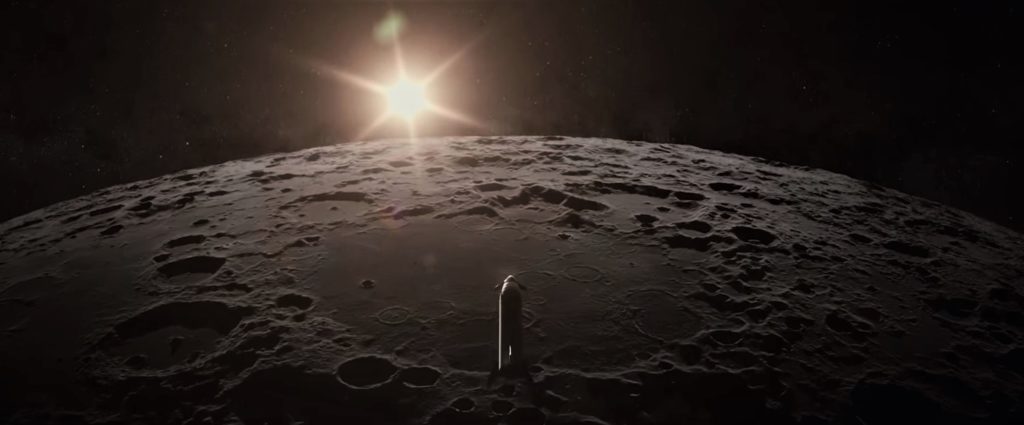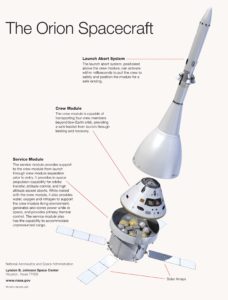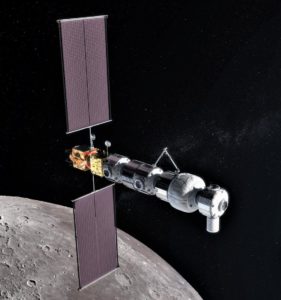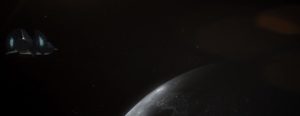
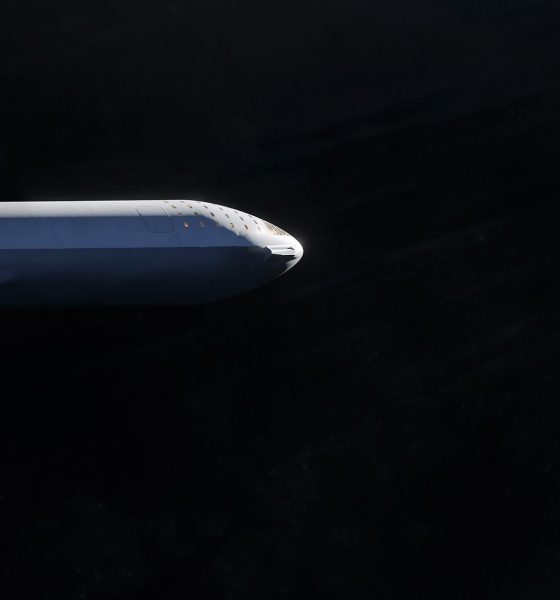
SpaceX
SpaceX to submit Moon lander proposal for latest NASA spaceflight competition
SpaceX reportedly plans to submit its own human-rated Moon lander design for NASA’s latest major request for proposal (RFP), part of the agency’s rough plan to return humans to the Moon no earlier than 2028.
Meant to begin delivering NASA astronauts to the surface of the Moon as early as 2028, the agency hopes to base those lander operations on a thus far unbuilt space station orbiting the Moon with the support of its SLS rocket and Orion spacecraft.
This is actually a pretty big deal. https://t.co/P6LXAMXVJI
— Eric Berger (@SciGuySpace) February 11, 2019
SpaceX will submit a lunar lander design.
— Eric Berger (@SciGuySpace) February 11, 2019
Meant to build directly off of SLS/Orion, a NASA-designed rocket and spacecraft beset with at least three years of delays and billions of dollars in cost overruns, it’s unclear where SpaceX might fit into NASA’s latest modernized attempt at an Apollo Program 2.0. Alongside the 2017 cancellation of Crew Dragon’s propulsive landing program due in part to the likely cost of the certification burden NASA would have placed on the technology before allowing it to land astronauts, SpaceX also canceled Red Dragon (and thus Grey Dragon), a proposal to use a minimally modified version of Crew Dragon as an ad-hoc Mars lander and R&D testbed.
Aside from the likely cost of certifying propulsive Crew Dragon to NASA specifications, CEO Elon Musk also explained the program’s cancellation as a consequence of SpaceX’s far greater interest in what he described as “vastly bigger ship[s]” in July 2017. This translated into a presentation at IAC 2017 a few months later, where Musk revealed SpaceX’s updated design for a giant, fully-reusable launch vehicle meant to enable sustainable Mars colonization, known then as BFR. BFR has since been reconceptualized at least two more times, settling (at present) on a radical new approach said to rely heavily on stainless steel as a replacement for advanced carbon composites.
Initially making one 200 metric ton thrust engine common across ship & booster to reach the moon as fast as possible. Next versions will split to vacuum-optimized (380+ sec Isp) & sea-level thrust optimized (~250 ton).
— Elon Musk (@elonmusk) February 1, 2019
In the second half of 2018 and the first few months of 2019, the SpaceX CEO’s BFR (now Starship/Super Heavy) narrative has noticeably diverged from a largely exclusive focus on Mars to include a new interest (be it genuine or out of convenience) in the Moon. Most notably, Musk stated in January and February 2019 that SpaceX’s single-minded goal for BFR was now “to reach the moon as fast as possible”. In response to a question about SpaceX’s intentions for the first few orbital BFR (Starship) launches, Musk also replied, “Moon first, Mars as soon as the planets align”.
This is likely explicitly connected to Japanese billionaire Yusaku Maezawa’s decision to purchase the first operational Starship (BFR) launch in support of his philanthropic #DearMoon project, meant to send 8-10 artists from across Earth on the first commercial voyage around the Moon as early as 2023. While no specific value was given, the implication of CEO Elon Musk’s emotional response when discussing the financial support pegged the number in the hundreds of millions of dollars, likely on the order of $250M to $500M. However, any astute bureaucrat or aerospace executive would also be (and have been) distinctly aware of a new political undercurrent pushing for the US and NASA to return humans to the Moon, circulating for the last few years before breaking through to the surface in the last six or so months.
- SpaceX’s updated BFR spaceship seen cresting over the Moon’s limb. (SpaceX)
- SpaceX’s 2017 BFS (now Starship) delivers cargo to a large lunar base. (SpaceX)
Orion/SLS versus Starship/Super Heavy?
Per Musk’s frequent and insistent comments on just how hard he expects it to be for SpaceX to fully fund the development of BFR, it would come as no surprise to learn that SpaceX had set its eyes on potential sources of major BFR development funds. Where exactly NASA will find the multibillion-dollar sum likely required to develop even a commercial human-rated Moon lander is entirely unclear, but alas. Although NASA’s new Moon mission seems like an apt fit for SpaceX, funding aside, the problem remains that SpaceX’s next-generation Starship/Super Heavy (formerly BFR) launch vehicle poses a direct, existential threat to NASA’s SLS rocket and Orion spacecraft, an almost entirely expendable system likely to cost no less than $1B per launch and unlikely to launch for the first time until 2021.
NASA’s human return to the Moon is meant to directly complement SLS/Orion thanks to the intention of using a theoretical Moon-based space station (known as Gateway) in a bizarre lunar orbit (known as a “Near Rectilinear Halo Orbit” or NRHO) as the base of lunar-landing operations. The decision to place said Gateway in a lunar halo orbit derives almost exclusively derives (PDF) from a separate decision to design NASA’s future exploration plans around SLS and Orion, particularly Orion in the context of the Moon. Put simply, Orion is relatively mass-inefficient and has a fairly limited amount of delta V (shorthand for the capacity to change one’s velocity), preventing far more useful orbits (i.e. actual lunar orbits). The fragile web of Gateway, SLS, Orion, and any potential crewed Moon landers is intentionally designed to be interdependent, meaning that each piece on its own makes little objective sense and has no obvious functional benefit relative to a bevy of alternatives.
- SLS Block 1. (NASA)
- NASA’s proposed Moon-based space station, known as Gateway. (NASA)
- BFR’s spaceship and booster (now Starship and Super Heavy) separate in a mid-2018 render of the vehicle. (SpaceX)
- A BFS attempts a Mars landing in this official updated render. (SpaceX)
As designed, SpaceX’s Starship/Super Heavy combo would be a nearly redundant and radically simpler solution to the mishmash of Gateway, SLS, Orion, and others. A return to using propulsive Crew Dragon landings as a method of significant payload delivery to the lunar surface is immensely unlikely. The value of an entirely new SpaceX-built craft is equally unclear, given Musk and SpaceX’s general stance on putting development funds towards things that bring the company closer to achieving its ultimate goal of sustainable interplanetary colonization. Regardless, it will undoubtedly be exciting to see what happens and whether SpaceX actually chooses to submit a proposal for one or all aspects of NASA’s baselined lunar lander.
Check out Teslarati’s newsletters for prompt updates, on-the-ground perspectives, and unique glimpses of SpaceX’s rocket launch and recovery processes!

News
SpaceX shades airline for seeking contract with Amazon’s Starlink rival

SpaceX employees, including its CEO Elon Musk, shaded American Airlines on social media this past weekend due to the company’s reported talks with Amazon’s Starlink rival, Leo.
Starlink has been adopted by several airlines, including United Airlines, Qatar Airways, Hawaiian Airlines, WestJet, Air France, airBaltic, and others. It has gained notoriety as an extremely solid, dependable, and reliable option for airline travel, as traditional options frequently cause users to lose connection to the internet.
Many airlines have made the switch, while others continue to mull the options available to them. American Airlines is one of them.
A report from Bloomberg indicates the airline is thinking of going with a Starlink rival owned by Amazon, called Leo. It was previously referred to as Project Kuiper.
American CEO Robert Isom said (via Bloomberg):
“While there’s Starlink, there are other low-Earth-orbit satellite opportunities that we can look at. We’re making sure that American is going to have what our customers need.”
Isom also said American has been in touch with Amazon about installing Leo on its aircraft, but he would not reveal the status of any discussions with the company.
The report caught the attention of Michael Nicolls, the Vice President of Starlink Engineering at SpaceX, who said:
“Only fly on airlines with good connectivity… and only one source of good connectivity at the moment…”
CEO Elon Musk replied to Nicolls by stating that American Airlines risks losing “a lot of customers if their connectivity solution fails.”
American Airlines will lose a lot of customers if their connectivity solution fails
— Elon Musk (@elonmusk) December 14, 2025
There are over 8,000 Starlink satellites in orbit currently, offering internet coverage in over 150 countries and territories globally. SpaceX expands its array of satellites nearly every week with launches from California and Florida, aiming to offer internet access to everyone across the globe.
Currently, the company is focusing on expanding into new markets, such as Africa and Asia.
News
Tesla hints at Starlink integration with recent patent
“By employing polymer blends, some examples enable RF transmission from all the modules to satellites and other communication devices both inside and outside the vehicle.”

Tesla hinted at a potential Starlink internet terminal integration within its vehicles in a recent patent, which describes a vehicle roof assembly with integrated radio frequency (RF) transparency.
The patent, which is Pub. No U.S. 2025/0368267 describes a new vehicle roof that is made of RF-transparent polymer materials, allowing and “facilitating clear communication with external devices and satellites.”
Tesla believes that a new vehicle roof design, comprised of different materials than the standard metallic or glass elements used in cars today, would allow the company to integrate modern vehicular technologies, “particularly those requiring radio frequency transmission and reception.
Tesla has recently filed a US patent application on integrating RF transparent materials into the roof structure.
“facilitating clear communication with external devices and satellites”
Tesla fleet is getting @Starlink connectivity integration soon. LFG @Tesla @elonmusk… pic.twitter.com/bLa8YtPLd1
— Chansoo Byeon (@Chansoo) December 9, 2025
Instead of glass or metallic materials, Tesla says vehicles may benefit from high-strength polymer blends, such as Polycarbonate, Acrylonitrile Butadiene Styrene, or Acrylonitrile Styrene Acrylate.
These materials still provide ideal strength metrics for crashworthiness, stiffness for noise, vibration, and harshness control, and are compliant with head impact regulations.
They would also enable better performance with modern technologies, like internet terminals, which need an uninterrupted signal to satellites for maximum reception. Tesla writes in the patent:
“By employing polymer blends, some examples enable RF transmission from all the modules to satellites and other communication devices both inside and outside the vehicle.”

One of the challenges Tesla seems to be aware of with this type of roof design is the fact that it will still have to enable safety and keep that at the forefront of the design. As you can see in the illustration above, Tesla plans to use four layers to increase safety and rigidity, while also combating noise and vibration.
It notes in the patent that disclosed examples still meet the safety requirements outlined in the Federal Motor Vehicle Safety Standards (FMVSS).
Starlink integrated directly into Tesla vehicles would be a considerable advantage for owners. It would come with a handful of distinct advantages.
Initially, the inclusion of Starlink would completely eliminate cellular dead zones, something that is an issue, especially in rural areas. Starlink would provide connectivity in these remote regions and would ensure uninterrupted service during road trips and off-grid adventures.
It could also be a critical addition for Robotaxi, as it is crucial to have solid and reliable connectivity for remote monitoring and fleet management.
Starlink’s growing constellation, thanks to SpaceX’s routine and frequent launch schedule, will provide secure, stable, and reliable internet connectivity for Tesla vehicles.
Although many owners have already mounted Starlink Mini dishes under their glass roofs for a similar experience, it may be integrated directly into Teslas in the coming years, either as an upgrade or a standard feature.
Investor's Corner
SpaceX IPO is coming, CEO Elon Musk confirms
However, it appears Musk is ready for SpaceX to go public, as Ars Technica Senior Space Editor Eric Berger wrote an op-ed that indicated he thought SpaceX would go public soon. Musk replied, basically confirming it.

Elon Musk confirmed through a post on X that a SpaceX initial public offering (IPO) is on the way after hinting at it several times earlier this year.
It also comes one day after Bloomberg reported that SpaceX was aiming for a valuation of $1.5 trillion, adding that it wanted to raise $30 billion.
Musk has been transparent for most of the year that he wanted to try to figure out a way to get Tesla shareholders to invest in SpaceX, giving them access to the stock.
He has also recognized the issues of having a public stock, like litigation exposure, quarterly reporting pressures, and other inconveniences.
However, it appears Musk is ready for SpaceX to go public, as Ars Technica Senior Space Editor Eric Berger wrote an op-ed that indicated he thought SpaceX would go public soon.
Musk replied, basically confirming it:
As usual, Eric is accurate
— Elon Musk (@elonmusk) December 10, 2025
Berger believes the IPO would help support the need for $30 billion or more in capital needed to fund AI integration projects, such as space-based data centers and lunar satellite factories. Musk confirmed recently that SpaceX “will be doing” data centers in orbit.
AI appears to be a “key part” of SpaceX getting to Musk, Berger also wrote. When writing about whether or not Optimus is a viable project and product for the company, he says that none of that matters. Musk thinks it is, and that’s all that matters.
It seems like Musk has certainly mulled something this big for a very long time, and the idea of taking SpaceX public is not just likely; it is necessary for the company to get to Mars.
The details of when SpaceX will finally hit that public status are not known. Many of the reports that came out over the past few days indicate it would happen in 2026, so sooner rather than later.
But there are a lot of things on Musk’s plate early next year, especially with Cybercab production, the potential launch of Unsupervised Full Self-Driving, and the Roadster unveiling, all planned for Q1.
